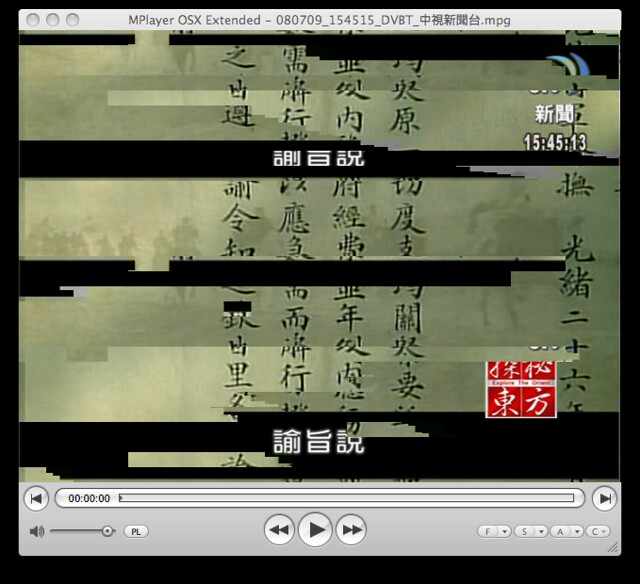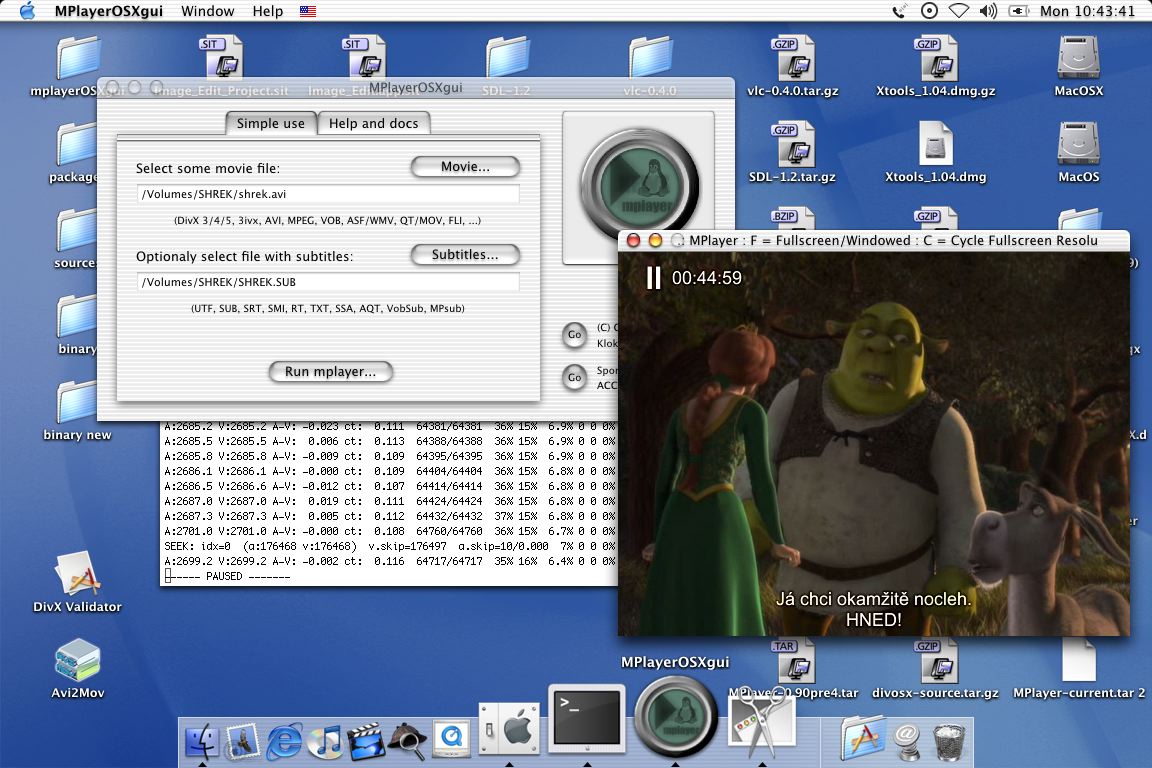

It's been awhile and I was a little rusty. I also wrote MPlayerShell to relearn Objective-C and Cocoa programming. My hope in publishing MPlayerShell is that 1) it's useful to someone else and 2) both MPlayer development teams incorporate what I've done here into their projects and make mine completely obsolete and unnecessary. It's a small, derivative work meant to scratch my own OCD-driven itch. MPlayerShell is not particularly innovative. But even this extra configuration can always be overridden at the command line. This significantly improves performance for Blu-ray Disc-sized video. When MPlayerShell launches MPlayer, it's configured to use a larger cache and leverage multiple processor cores for more threads. It's "instant on" and similar to the mode built into MPlayer itself. However, full-screen mode in MPlayerShell doesn't use the animated transition behavior introduced in OS X Lion. Those new menu commands, as well as those for window sizing, are more consistent in appearance and behavior with the standard QuickTime Player application than with MPlayer.

MPlayerShell also adds explicit menu commands for full-screen and float-on-top modes. Its command line interface is essentially identical to MPlayer. MPlayerShell fixes all of these and other problems by launching MPlayer as a background process, capturing its output, and presenting a whole new application user interface.

Incorrect handling of application activation policy on exit (e.g.White "turds" at the bottom corners of the window and full-screen views ( mplayer only).Video playback halted during mouse down through the menubar.I love the flexibility and power of MPlayer, but here are some of the problems I was having: I wrote MPlayerShell because I was unhappy with the visual experience built into MPlayer on OS X, specifically playing video via the mplayer and mplayer2 command line utilities.
#REMOVE MPLAYER OSX EXTENDED INSTALL#
On Snow Leopard the system's libiconv.2 is not new enough (Version 8 is required) so install libiconv using for example homebrew or macports, then link to it.MPlayerShell is an improved visual experience for MPlayer on OS X. For now it's probably best to link to the system Fontconfig and Freetype libraries. Note: I've reorganized the bundle after the FFMpeg-MT merge and haven't released a test version with it yet.
#REMOVE MPLAYER OSX EXTENDED DOWNLOAD#
The easiest way to get that is download the latest (test) version of MPE and extracting the binary bundle form " MPlayer OSX Extened.app/Contents/Resources/Binaries". The default setup links to the libraries inside the mpextended.mpBinaries bundle in the binaries folder. It's best to use the same Fontconfig and Freetype versions as used in the binary bundle. It adds updating separate bundles without a restart, used in MPE for updating its binary bundles with Sparkle.

Make sure you've got the dependencies below and then you should be able to compile MPE directly with XCode. The project can be built using either XCode 3 or 4. VLC: Feature-packed but clunky interface.mpv: Has its own UI but is a bit cryptic.MPlayer OSX Extended has been retired and won't receive any future updates.Īfter development of MPlayer OSX Extended has been slow for many years and development of the underlying MPlayer project has moved on to mpv, I have decided that it doesn't make sense to invest more time into this project.Ĭonsider using one of the following alternatives for video playback on macOS:


 0 kommentar(er)
0 kommentar(er)
